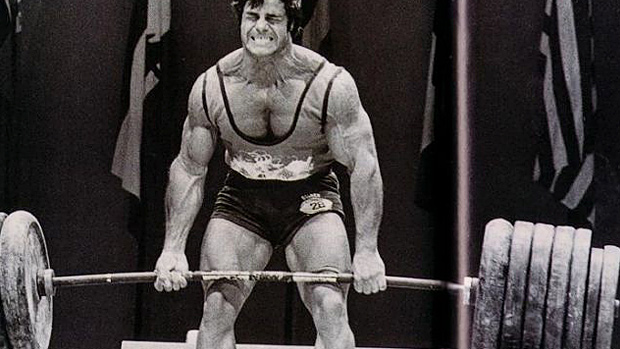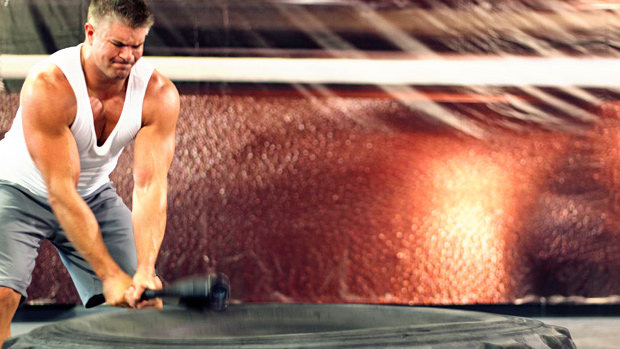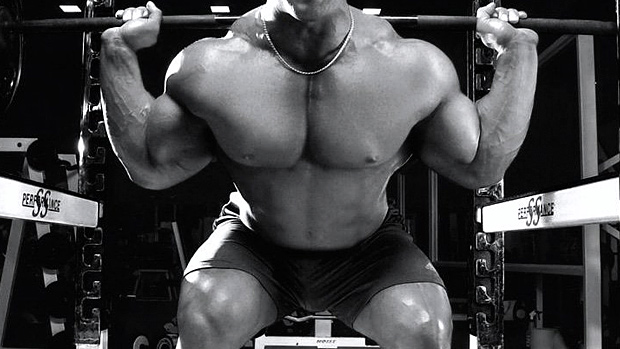The Goal Dictates Everything
The deadlift is the most basic and effective of all exercises. However, depending on your goals, how you vary your sets, your reps, and your poundage can greatly influence your results, whether you want to use it as a strength exercise, a muscle building exercise, or a combination of both.
Bodybuilders should definitely do both sumo and conventional deadlifts, but powerlifters need to master the one they use in competition.
Depending on your goal, you can use sumo, conventional, or both in your training. When it comes to powerlifting, you'll often see that people use the same lift in competition. They may train with both lifts, but when it comes to competing, every lifter usually has a general preference.
If you're talking about building muscle, however, there's a difference between them. The conventional deadlift uses a lot more back and glutes while the sumo deadlift is much more hip and quad-dominant. If you want to build your glutes and strengthen your hips, then use both types in your training. One thing to be aware of, though, is that the sumo deadlift is easier on the body than the conventional version.
Another factor to consider is your body type. Not everyone is meant to pull sumo and not everyone is meant to pull conventional. Consider, too, that depending on your mobility, you may not be ready to pull from the floor and you may require blocks to put you in proper starting position. Genetics plays a huge role in your ultimate choice, specifically your hip anatomy.
Take-home message: Train both deadlifts, but one will usually feel better, feel more right. Training both types is especially true for bodybuilding, as training both types will target a greater number of muscles.
While doing low reps for strength and higher reps for building muscle is generally true, the most muscular bodybuilders spend a lot of time doing heavy deadlifts.
A powerlifter is pretty much concerned about one thing and one thing only – adding more weight to the bar and improving his 1-rep max (1RM). Training percentages are dictated by the program, how long to go before competition day, recovery, and other factors. Still, most competitive powerlifters train with 50% to 90% of 1RM and generally leave their heavy stuff (above 90%) for when they're on the platform.
However, when it comes to building muscle, how much weight you use isn't the primary goal. It doesn't matter if you're pulling 300 pounds or 600 pounds when you're trying to build muscle. Something to keep in mind, though, is that you don't often see powerlifters with small backs. If anything, they have some of the thickest and most developed backs in the world.

Deadlifts will build a big, thick, muscular back that you can't get from using machines and rowing variations. If you look at competitive bodybuilders who are powerlifters or ex-powerlifters, they have a back that stands out. Arnold and Franco both fit in this category and it showed. Another example is Ronnie Coleman who lifted insane poundages and had one of the best backs ever.
Take-home message: Always try to get stronger. You can't go wrong with strong, whether you're a bodybuilder or a powerlifter.
Higher reps generally contribute to building muscle.
Most powerlifters will train with anywhere from 1-8 reps, but when training specifically for strength, the general rep range is 3-5. Bodybuilders and people who want to add muscle to their backs usually stick to doing 8-12 deadlifts and sometimes more. The higher rep ranges will contribute to building muscle, but grip strength always ends up being a limiting factor.
If this sounds a bit contradictory to difference number 2 above where I say lifting heavy is usually the way to go with bodybuilders and powerlifters alike, it is and it isn't. Generally, you should opt for more reps if you're after muscle, but the best bodybuilders use a blend of heavy sets for low reps and lighter weights for higher reps.
Take-home message: Generally, use 1-6 reps for strength and 5-12 for muscle.
The heavier you lift, the more rest between sets you need.
When it comes to powerlifting, you always want to maintain strength in your training. The goal is not to get tired but to finish all sets and reps and still maintain strength. Deadlift recovery times can be anywhere from 3 to 15 minutes when pulling heavy and as low as 1 to 3 minutes if doing speed deadlifts. The rest time will depend on the goal of the deadlifts, the percentages used, and your personal recovery time. Of course, all of this goes out the window when you're talking about females, as they generally recover faster than guys when training heavy.
Take-home message: Rest as long as needed, but to build strength rest longer than you ordinarily would. Rest times are generally shorter for bodybuilding sets.
For optimal strength, allow a few days for your CNS to recover if you're going heavy.
Of the three powerlifting lifts (squat, bench press, and deadlift), the deadlift is the one that really cuts into recovery. A muscle can recover quickly, but when it comes to powerlifting and being strong, the main factor is your central nervous system. The more you push towards your 1RM in deadlifts, the more you cut into your CNS and overall recovery.
Take-home message: The deadlift can do more damage than any other exercise. Respect it always. Training heavy taps into your CNS much more than doing deadlifts for bodybuilding.

Powerlifters need more of the fancy stuff. Bodybuilders don't.
When you deadlift, there are many ways to pick up a heavy weight. You can do partial-range deadlifts from blocks, rack pulls, deficit pulls to challenge your range of motion, paused deadlifts from below the knee, paused deadlifts above the knee, etc. You can also add bands to increase resistance, add chains, or do a combination of bands and chains. The list of deadlift options is endless.
For the most part, unless you're a pretty experienced powerlifter trying to improve a certain capacity, range, or weakness, the regular lifter doesn't need most of that stuff. And bodybuilders don't need most of the specialty stuff. However, rack pulls are important. They can help overload your upper back, which will add thickness more than anything else. Also, pulling from the floor isn't always a great idea for some people. Depending on genetics, mobility, and flexibility, a deadlift from the floor can do more damage than good. Find a good start position to pull off blocks when deadlifting and slowly try to improve your range of motion.
Take-home message: Unless you're a serious powerlifter, you don't need chains, bands, or the rest.
Don't drop a deadlift in competition because of a lousy grip. Not competing? Straps have their uses.
When it comes to deadlifts, one of the best and worst things you can use in your training is lifting straps. If they're used properly, they can help you get stronger, reduce injuries, and help you build muscle, but you have to use them correctly and only when needed.
For powerlifting, straps can help you train in the overhand grip style (not mixed), which is much easier on the body. A mixed grip is better for strength and it will always allow you to lift more – at least initially – but over time it can lead to overuse injuries and potential biceps tears. If you compete in powerlifting, your grip will matter, so don't train with straps too often. Otherwise, you won't develop a solid, natural grip, and losing a deadlift in competition because of a weak grip is a horrible feeling.
If you're a bodybuilder, straps are great for keeping your joints healthy and improving your deadlifts. However, it's still important to build a strong grip before resorting to straps. There's nothing worse than seeing someone who can't lift anything without them.
Take-home message: Straps can be a great training tool, but don't be a pussy and use them all the time.
The trap bar is a great tool for bodybuilders, but not so much for powerlifters.

Using a trap bar is a great alternative to the standard bar. Most of the time, people should start with a trap bar and then progress to a straight bar. When it comes to being easier overall on the body and joints and being able to use more weight, the trap bar is extremely useful and versatile.
If you're a competitive powerlifter, however, there's some carryover from a trap bar to a standard bar, but at the end of the day you compete with a standard bar. It only makes sense that you should train with it 90% of the time. But if you're a bodybuilder and you want to build muscle and don't plan on stepping on a platform in the next few months, a trap bar is a solid way to build size and strength while reducing chances of injury.
Take-home message: The trap bar is a great compliment to a standard bar. If you've got one, use it wisely.





